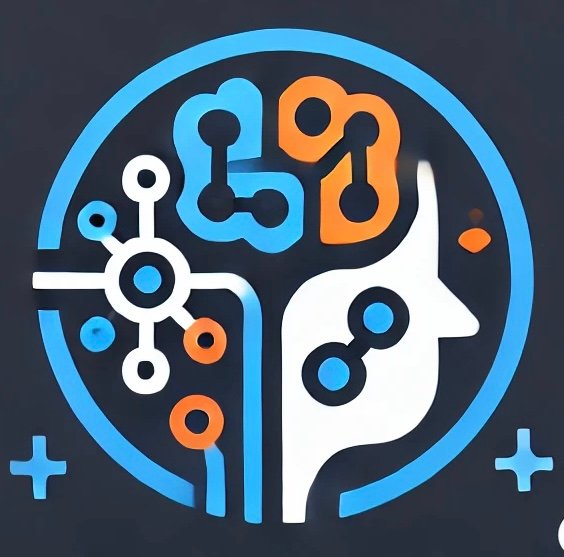Introduction

Remember the last time you contacted customer support and got an immediate response at 3 AM? Or when a company knew exactly what product to recommend based on your browsing history? Chances are, you were interacting with AI-powered systems that have revolutionized how businesses communicate with their customers.
In 2025, AI in customer service isn’t just a competitive advantage—it’s becoming a necessity. As consumer expectations soar and digital interactions dominate, companies that leverage artificial intelligence are seeing dramatic improvements in customer satisfaction, operational efficiency, and their bottom line.
This comprehensive guide explores how AI is transforming customer service and client communication, featuring real-world examples, expert insights, and practical steps for implementation. Whether you’re a small business owner curious about chatbots or an enterprise leader looking to enhance your existing AI strategy, this article will equip you with the knowledge to navigate the AI-driven customer service landscape in 2025 and beyond.
Table of Contents
Background & Importance
What Exactly is AI in Customer Service?
AI in customer service refers to the application of artificial intelligence technologies to enhance customer interactions, automate routine inquiries, and provide personalized support at scale. These systems use advanced algorithms to understand customer intent, process natural language, and deliver appropriate responses—often without human intervention.
At its core, AI-powered customer service works through several key mechanisms:
- Machine Learning (ML): Systems that analyze historical customer data to identify patterns and make predictions about future needs
- Natural Language Processing (NLP): Technology that helps computers understand, interpret, and respond to human language in a valuable way
- Automation: Tools that handle repetitive tasks without human intervention, freeing up agents for complex issues
- Predictive Analytics: Algorithms that anticipate customer needs based on past behavior and current context
According to Gartner’s Customer Service Technology Survey, by early 2025, organizations implementing AI in customer service have seen a 70% increase in self-service containment rates and a 40% reduction in service costs. These numbers aren’t just impressive—they’re transformative for businesses of all sizes.
The adoption of AI in customer support continues to accelerate. McKinsey’s Global Survey reveals that 63% of companies reported revenue increases due to AI implementation in customer service functions, with the highest gains in the e-commerce and financial services sectors.
Key Benefits & Challenges
Top Benefits of AI in Customer Service
1. 24/7 Availability and Faster Response Times
The days of “business hours only” support are long gone. AI-powered systems never sleep, providing instant responses regardless of time zones or holidays. Zendesk reports that 75% of customers expect help within 5 minutes, and AI is making this possible without expanding human teams.
Real-life example: Lemonade, the insurance company, uses an AI assistant named Maya that processes claims in as little as three seconds, rather than the days or weeks traditional insurance companies might take. Their record is a claim processed and paid in just three seconds.
2. Cost Savings Through Automation
By automating routine inquiries, businesses can significantly reduce operational costs. According to IBM’s AI report, companies implementing conversational AI have reduced customer service costs by up to 30%, with some seeing ROI within the first six months.
Real-life example: Bank of America’s virtual assistant, Erica, has served more than 19.5 million customers and handled over 100 million requests, saving the equivalent of thousands of human work hours while maintaining high customer satisfaction.
3. Enhanced Personalization via AI-Driven Insights
AI excels at processing vast amounts of customer data to deliver hyper-personalized experiences. By analyzing past purchases, browsing behaviour, and service interactions, AI can tailor recommendations and solutions to individual preferences.
Real-life example: Sephora’s Virtual Artist uses AI to analyze a customer’s facial features and skin tone to recommend personalized makeup products and application techniques, creating a customized shopping experience that has increased conversion rates by 11%.
4. Improved Customer Satisfaction and Loyalty
When customers receive quick, accurate, and personalized service, their satisfaction levels naturally rise. Accenture’s research indicates that companies using AI for customer service report a 61% increase in customer satisfaction scores.
Real-life example: Starbucks implemented “Deep Brew,” an AI system that personalizes recommendations through their mobile app. This has contributed to a 3% increase in same-store sales and strengthened customer loyalty program engagement.
5. Scalability for Handling High-Volume Inquiries
During peak seasons or unexpected surges, AI systems can handle virtually unlimited inquiries simultaneously—something no human team could match.
Real-life example: When the COVID-19 pandemic hit, Walgreens implemented an AI-powered chatbot that handled a 500% increase in customer inquiries about store hours, product availability, and safety protocols without any degradation in service quality.
Common Challenges & How to Overcome Them
AI Misinterpretations and How to Improve Accuracy
Despite advances in NLP, AI can still misunderstand complex queries or unusual phrasings. This challenge is particularly evident in industries with specialized terminology or when serving diverse customer bases.
Solution: Implement continuous learning mechanisms where AI systems flag uncertain interpretations for human review. Tools like Google’s Dialogflow CX provide built-in disambiguation features that ask clarifying questions when confidence scores are low.
Real-life example: UPS improved its virtual assistant’s accuracy by 27% by implementing a feedback loop where customer service representatives reviewed and corrected AI misinterpretations, effectively “teaching” the system to better understand shipping-specific terminology.
Customer Skepticism & How to Build Trust in AI Interactions
Many customers remain wary of AI, fearing impersonal service or data privacy concerns. This scepticism can lead to frustration and channel switching.
Solution: Be transparent about AI usage, offer easy escalation to human agents, and ensure AI systems communicate in a natural, empathetic manner.
Real-life example: Intercom’s Resolution Bot identifies itself as an automated assistant but uses conversational language and offers an immediate option to connect with a human agent. This transparency has led to a 60% acceptance rate among initially sceptical customers.
Integration Challenges with Existing Systems
Legacy systems often struggle to connect seamlessly with new AI implementations, creating data silos and inconsistent customer experiences.
Solution: Consider API-first solutions like Zendesk’s Answer Bot or Salesforce Einstein that are designed to integrate with existing CRM and support systems.
Real-life example: HubSpot faced integration challenges when implementing its Service Hub AI features. They developed a phased approach, starting with standalone AI functions before gradually integrating them with their core CRM, resulting in 23% fewer technical issues than their initial direct integration attempt.
Ethical Considerations & Data Privacy Concerns
As AI systems collect and process vast amounts of customer data, privacy concerns and ethical questions inevitably arise.
Solution: Implement robust data governance frameworks, obtain explicit consent for data usage, and regularly audit AI systems for bias or privacy issues.
Real-life example: Microsoft’s Customer Service AI follows GDPR-compliant practices by anonymizing personal data used for training and implementing the “right to be forgotten” functionality that makes it easy for customers to have their data removed from training datasets.
Real-World Use Cases & Application of AI is Used Across Different Industries
How AI is Used Across Different Industries
E-commerce
Online retailers use AI to personalize the shopping experience from browsing to post-purchase support. Product recommendations, inventory notifications, and order tracking are increasingly AI-driven.
Real-life example: Amazon’s AI-powered recommendation engine drives 35% of its sales through personalized suggestions based on browsing history, previous purchases, and similar customer profiles.
Banking
Financial institutions deploy AI for fraud detection, account management, and investment advice, creating a seamless experience across digital and physical channels.
Real-life example: JPMorgan Chase implemented COIN (Contract Intelligence), an AI system that reviews complex loan agreements in seconds rather than the 360,000 hours it previously took human lawyers to review.
Healthcare
In healthcare, AI assists with appointment scheduling, medication reminders, and even preliminary symptom assessment.
Real-life example: Providence St. Joseph Health uses an AI chatbot named Grace that helps patients find appropriate care options based on their symptoms, reducing unnecessary emergency room visits by 25%.
Telecom
Telecommunications companies leverage AI to predict network issues, troubleshoot common device problems, and manage subscription changes without human intervention.
Real-life example: T-Mobile’s AI assistant helps customers troubleshoot device issues, change plans, and check account balances, resolving 70% of inquiries without human intervention and reducing call centre volume by 25%.
Case Study: AI Chatbots Reducing Wait Times by 60%
Juniper Research predicts that by the end of 2025, chatbots will be responsible for cost savings of over $8 billion annually, with the most significant impact on wait times and first-contact resolution rates.
Spotlight on TD Bank: TD Bank implemented an AI chatbot named TD Clari that handles over 70% of routine customer inquiries. Within six months of deployment, average wait times dropped from 11 minutes to just 4 minutes—a reduction of over 60%. Customer satisfaction scores increased by 25%, and the bank was able to reallocate 35% of its support staff to more complex customer needs.
What made TD Bank’s implementation particularly successful was its approach to seamless human handoff. When the AI detects complex questions or emotional cues indicating frustration, it automatically transfers the conversation to a human agent along with a complete conversation history, ensuring continuity.
Step-by-Step: Implementing AI in a Customer Support Workflow
- Audit Current Customer Interactions
- Identify the most common customer inquiries
- Determine which channels receive the highest volume
- Measure current response times and resolution rates
- Select the Right AI Solution
- Start with a Focused Use Case
- Begin with high-volume, low-complexity inquiries
- Create clear pathways for escalation to human agents
- Establish success metrics before deployment
- Train Your AI Model
- Feed historical customer conversations into the system
- Develop a comprehensive knowledge base for the AI to reference
- Create response templates for common scenarios
- Deploy with Continuous Monitoring
- Implement analytics to track performance
- Establish regular review processes for failed interactions
- Create feedback loops for ongoing improvement
- Optimize Based on Real Interactions
- Analyze customer satisfaction with AI interactions
- Identify patterns in escalations to human agents
- Continuously refine AI responses based on successful resolutions
Real-life example: When Shopify implemented their AI assistant, they began with just handling order tracking inquiries—their highest volume, most straightforward request. After achieving a 93% success rate, they gradually expanded to returns processing, product recommendations, and eventually complex troubleshooting, increasing their AI resolution rate by 15% with each phase.
Expert Insights & Thought Leadership
What Industry Leaders Are Saying About AI in Customer Service
Satya Nadella, CEO of Microsoft: “AI in customer service isn’t just about automation—it’s about amplification of human capabilities. The most successful implementations we’ve seen combine AI efficiency with human empathy.”
Julie Sweet, CEO of Accenture: “The companies seeing the highest ROI from AI in customer service are those treating it as a transformation of the entire customer journey, not just a point solution for cost reduction.”
Cristiano Amon, CEO of Qualcomm: “In 2025, we’re seeing the true convergence of AI and 5G, enabling real-time, contextual customer experiences that weren’t possible even two years ago. The businesses that leverage this combination are creating entirely new service paradigms.”
Comparing AI-Driven vs. Traditional Customer Support Models
| Aspect | Traditional Support | AI-Driven Support |
| Availability | Limited to business hours | 24/7/365 service |
| Scalability | Requires hiring and training | Instantly scalable |
| Consistency | Varies by agent | Uniform responses |
| Personalization | Based on agent memory/notes | Data-driven across channels |
| Cost Structure | Linear (costs increase with volume) | Exponential (marginal cost decreases at scale) |
| Resolution Time | Minutes to days | Seconds to minutes |
| Knowledge Base | Limited to agent expertise | Entire company knowledge |
Real-life example: Marriott Hotels compared performance metrics between their traditional call centres and their new AI-powered virtual assistant. For common requests like reservation modifications, the AI system averaged a 32-second resolution time compared to 8 minutes with human agents, while maintaining a 94% customer satisfaction rate—nearly identical to human-handled interactions.
AI’s Impact on Human Customer Service Roles
Contrary to popular concerns, AI isn’t eliminating customer service jobs—it’s transforming them. According to Forrester Research, while 30% of routine customer service tasks will be automated by 2025, the demand for specialized customer experience professionals is expected to grow by 34%.
Evolution of Customer Service Roles:
- AI Trainers and Supervisors: Professionals who train, monitor, and improve AI systems
- Complex Issue Specialists: Agents who handle uniquely difficult or emotionally sensitive situations
- Customer Experience Designers: Experts who design seamless transitions between AI and human touchpoints
- Insight Analysts: Professionals who interpret AI-gathered data to improve products and services
Real-life example: After implementing an AI chatbot, Ticketmaster redeployed 70% of their frontline agents into newly created “Experience Specialist” roles. These employees now focus on resolving complex issues that the AI escalates to them, resulting in a 23% increase in employee satisfaction and an 18% reduction in turnover.
Step-by-Step Guide or Action Plan
How Businesses Can Integrate AI for Improved Service
For Small Businesses (1-50 employees)
- Start with Ready-Made Solutions
- Leverage AI-Enhanced Email Management
- Use tools like Front that automatically categorize and prioritize incoming messages
- Implement AI-generated response templates for consistent communication
- Set up automated follow-ups for common scenarios
- Implement Basic Voice AI
- Consider simple IVR (Interactive Voice Response) systems with natural language capabilities
- Start with basic routing and information delivery
- Ensure easy paths to human agents
For Mid-Size Businesses (51-500 employees)
- Develop an Omnichannel AI Strategy
- Implement cohesive AI solutions across web, mobile, and social channels
- Ensure consistent customer recognition across touchpoints
- Create seamless transitions between channels
- Integrate with CRM Systems
- Connect AI capabilities with your customer database for personalized interactions
- Use predictive analytics to anticipate customer needs
- Implement proactive outreach for common issues
- Implement Sentiment Analysis
- Deploy tools that can detect customer emotions and adjust responses accordingly
- Create automatic escalation paths for detected frustration
- Use sentiment data to improve products and services
For Enterprise Organizations (500+ employees)
- Develop Custom AI Models
- Invest in proprietary AI trained on your specific customer data
- Build industry-specific NLP capabilities
- Implement multimodal AI that can process text, voice, and visual inputs
- Create AI Centers of Excellence
- Establish dedicated teams for AI implementation and optimization
- Develop internal knowledge-sharing across departments
- Create governance frameworks for ethical AI use
- Implement Predictive Service Models
- Deploy systems that identify potential issues before customers report them
- Develop automated resolution workflows for predicted problems
- Create proactive communication templates for common scenarios
Checklist: Essential AI Tools for Customer Engagement
- Conversational AI Platform: Dialogflow, IBM Watson Assistant, or Rasa
- Customer Data Platform: Segment, Tealium, or Adobe Experience Platform
- Sentiment Analysis Tool: Clarabridge, Lexalytics, or Brandwatch
- Voice Analytics Software: CallMiner, NICE, or Verint
- Knowledge Management System: Bloomfire, Guru, or Confluence
- Customer Journey Analytics: Pointillist, Thunderhead, or Glassbox
Best Practices for Training AI Models for Customer Interactions
- Use Real Conversation Data
- Train your AI on actual customer interactions, not hypothetical scenarios
- Include successful and unsuccessful conversations in training data
- Continuously update training with new interactions
- Implement Clear Escalation Paths
- Define specific triggers for human handoff
- Create seamless transition protocols that preserve conversation context
- Train human agents on effective AI collaboration
- Develop a Brand-Consistent Voice and Tone
- Create custom responses that reflect your brand personality
- Ensure consistent terminology across AI and human communications
- Test AI responses with focus groups for brand alignment
- Optimize for Multichannel Deployment
- Adapt AI responses to channel-specific constraints
- Create consistent customer recognition across channels
- Develop channel-specific success metrics
- Establish Continuous Improvement Processes
- Regularly review failed interactions
- Implement A/B testing for alternative response patterns
- Create feedback loops with customer service teams
Real-life example: HubSpot created a “Voice Committee” consisting of marketers, customer service reps, and product developers who review their chatbot responses quarterly for brand consistency. This cross-functional approach has increased their chatbot satisfaction scores by 17% year-over-year.
Common Myths & Misconceptions
Myth #1 – AI Will Replace Human Agents
Perhaps the most persistent myth is that AI will eliminate customer service jobs. The reality is far more nuanced.
The Truth: AI is best at handling routine, repeatable tasks, freeing human agents to focus on complex problems and emotional connections. Deloitte’s research shows that companies implementing AI in customer service have increased their human customer service hiring by 15% on average, though the roles have evolved to require higher emotional intelligence and problem-solving skills.
Real-life example: After Vodafone implemented TOBi, their AI assistant, they found that while 70% of simple inquiries were handled by the AI, customer expectations for human interactions increased in complexity. This led them to create a new “Resolution Specialist” role with higher pay and additional training, actually increasing their customer service budget while improving satisfaction scores.
Myth #2 – AI Chatbots Are Impersonal
Many business leaders worry that AI-driven interactions feel robotic and impersonal, potentially damaging customer relationships.
The Truth: Today’s conversational AI can deliver highly personalized experiences by leveraging customer data across touchpoints. According to Salesforce’s State of the Connected Customer report, 76% of customers expect companies to understand their needs and expectations, something modern AI is increasingly capable of doing through data analysis.
Real-life example: Stitch Fix’s AI stylist combines algorithm-driven recommendations with conversational style quizzes to create personalized clothing selections. Customer feedback shows that 84% of users find these AI interactions “as personal or more personal” than in-store stylist consultations because the AI retains and applies preferences more consistently.
Myth #3 – AI is Only for Large Corporations
Small business owners often assume that AI technology is too expensive or complex for their operations.
The Truth: The democratization of AI has made powerful tools accessible to businesses of all sizes, often through subscription models with minimal upfront investment. Platforms like Tidio offer AI chatbots starting at less than $50 per month, with no technical expertise required for implementation.
Real-life example: Golden Street Cafe, a single-location coffee shop in Portland, implemented a $39/month AI chatbot on their website to handle online orders and frequently asked questions. Within three months, they increased online orders by 24% and reduced missed calls by 60%, achieving ROI within the first week of deployment.
Future Trends & Predictions
The Rise of AI-Driven Voice Assistants in Customer Support
While chatbots have dominated the AI customer service landscape, voice AI is rapidly gaining ground. According to Juniper Research, voice assistant transactions are expected to reach $164 billion globally by 2026, with customer service interactions representing a significant portion.
Technologies like Google’s Contact Center AI and Amazon’s AWS Contact Center Intelligence are making sophisticated voice AI accessible to more businesses, enabling natural conversations that can understand context, accents, and even emotional states.
Future vision: By late 2025, we’ll likely see hybrid voice/visual AI assistants becoming standard, where customers can speak naturally while AI generates visual confirmations, product images, and interactive elements—combining the convenience of voice with the clarity of visual information.
AI-Powered Predictive Analytics for Proactive Issue Resolution
The next frontier in AI customer service is shifting from reactive to proactive support. By analyzing patterns in customer behaviour, product usage, and historical issues, AI systems can identify and address potential problems before customers even notice them.
Real-life example: Netflix’s recommendation system doesn’t just suggest content—it also predicts and prevents technical streaming issues by analyzing network conditions and device performance, automatically adjusting video quality to prevent buffering before it occurs.
Future vision: By 2026, predictive customer service AI will integrate with IoT devices to monitor product performance in real time. Imagine your car manufacturer contacting you to schedule maintenance for a part that’s showing early signs of wear, or your refrigerator automatically ordering a replacement water filter before the current one expires.
How Emotional AI Will Transform Client Interactions
Perhaps the most exciting development is in the field of emotional AI, also known as affective computing. These systems can recognize and respond to human emotions through vocal tone analysis, facial expression recognition, and text sentiment analysis.
Companies like Affectiva and Realeyes are pioneering technologies that can detect subtle emotional cues, allowing AI systems to respond with appropriate empathy and adjust their approach based on customer mood.
Future vision: Within the next two years, we’ll likely see mainstream adoption of emotionally intelligent AI that can detect frustration, confusion, or satisfaction and adapt accordingly—perhaps slowing down explanations when confusion is detected, offering additional assistance when frustration appears, or suggesting complementary products when satisfaction is high.
Conclusion & Call to Action
The integration of AI in customer service and client communication represents one of the most significant business transformations of our time. From 24/7 availability and personalized interactions to predictive support and emotional intelligence, AI is redefining what’s possible in customer experience.
As we’ve explored throughout this article, successful AI implementation isn’t about replacing human agents—it’s about creating a symbiotic relationship where technology handles routine tasks while human creativity and empathy tackle complex challenges. This partnership delivers what today’s customers truly want: immediate, personalized, and effective service across all touchpoints.
For businesses still on the sidelines, the time to explore AI customer service solutions is now. The technology has matured, costs have decreased, and implementation has become increasingly straightforward. Whether you’re a small business looking to implement your first chatbot or an enterprise seeking to enhance your existing AI strategy, the potential returns in customer satisfaction, operational efficiency, and competitive advantage are too significant to ignore.
Start by identifying one high-volume, low-complexity aspect of your customer service operation that could benefit from automation. Research appropriate solutions, set clear success metrics, and implement them with a focus on continuous improvement. Remember that AI implementation is a journey, not a destination—the most successful organizations view their AI systems as constantly evolving assets that grow smarter and more effective with each interaction.
The future of customer service is intelligent, predictive, and deeply personal. Is your business ready?
Related Resources:
- The Complete Guide to AI-Driven Customer Experience Strategy
- How to Choose the Right Chatbot Platform for Your Business
- Measuring ROI: Key Metrics for AI Customer Service Initiatives
- Building a Seamless Handoff Between AI and Human Agents
- The Best AI-Powered CRM Tools for Sales Professionals in 2025




